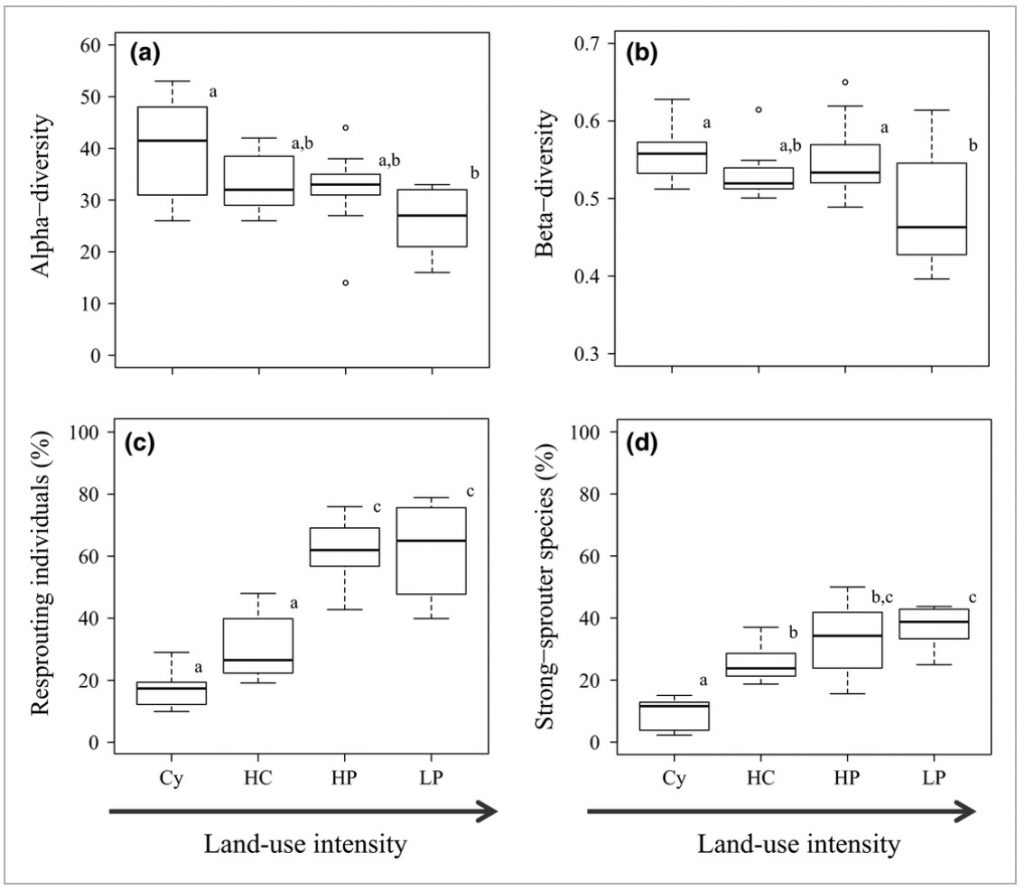Secondary succession in the tropics can follow alternative pathways. Land-use history is known to engender alternative successional communities, but the underlying mechanisms driving and sustaining divergence remain unclear. In this study, ATBC researchers and collaborators aim to answer the following questions: (1) does previous land use act as a filter for species composition in secondary forests; and (2) what are the relative roles of management practices, soil properties and landscape composition in determining species composition?
To read the article click at the following link: http://onlinelibrary.wiley.com/doi/10.1111/jvs.12457/full

Figure 3. Changes in community diversity and regeneration strategies with previous land-use intensity. Comparisons across MRT groups on (a) α-diversity calculated as number of species within 500 m2, (b) β-diversity, (c) percentage resprouting genets and (d) percentage strong sprouter species, for each group formed by the multivariate regression tree. Cy (one cycle), HC (high clay content), HP (high P content), LP (low P content). Boxes represent lower and upper quartile, horizontal line represents the median, and whiskers extend to the lowest and highest datum within 1.5 interquantile range. Significant differences among groups are indicated with different letters.



